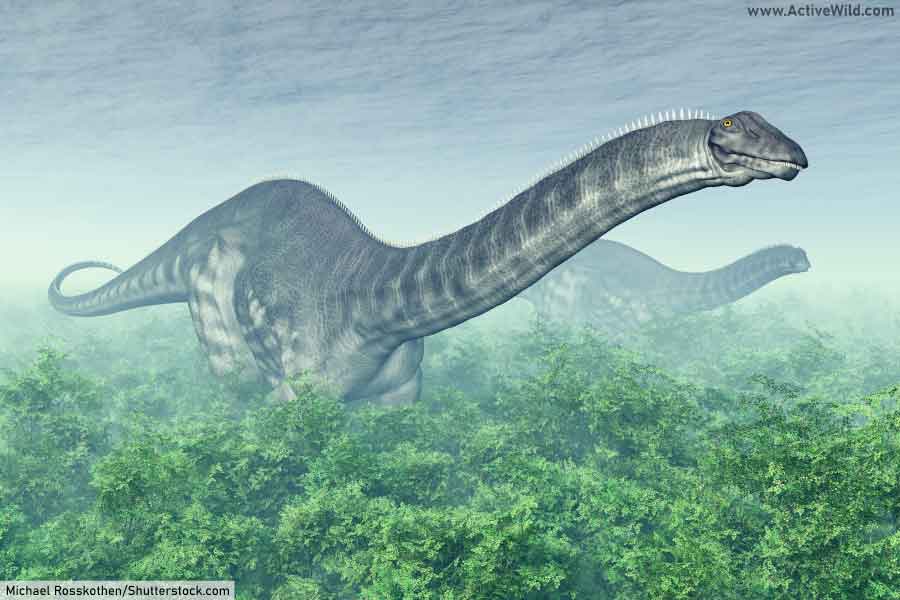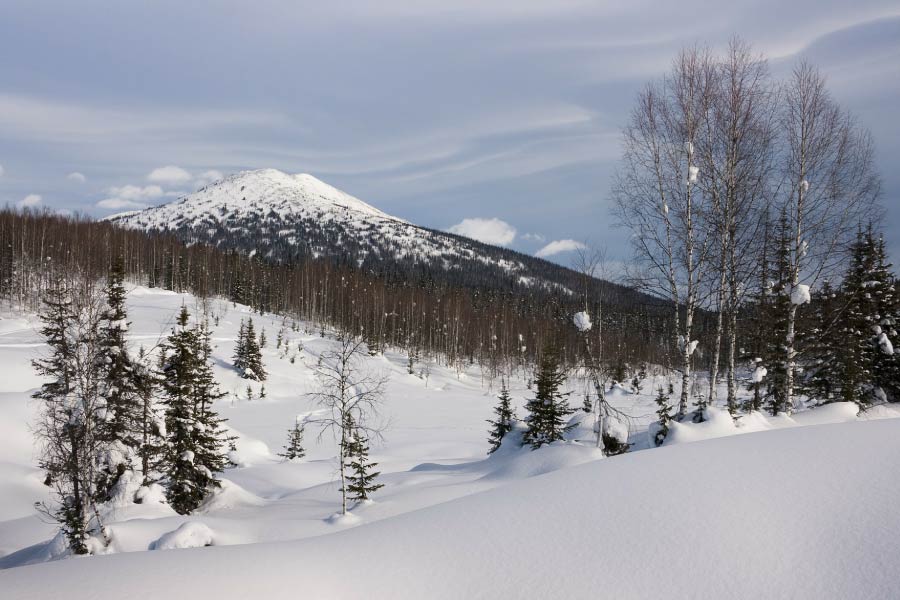The world’s forests are home to a staggering number of plants and animals. Forests also perform many important ecological functions, including the production of much of the oxygen we breathe.
On this page you’ll find out about the forest biome and the world’s forests…
The Forest Biome: Page Index
- What is the Forest Biome?
- Why Are Forests Important?
- Prehistoric Forests
- Deforestation
- Forest Layers
- What are the Different Types of Forest?
- Tropical Forest
- Tropical Forest Biodiversity
- Temperate Forests
- Temperate Forest Biodiversity
- Boreal Forests
- Boreal Forest Biodiversity
Explore Other Biomes On These Pages:
- Rainforest Workbooks To Download & Print
- What is a biome? What are the different types of biomes? Find out on this page: Biomes
What is the Forest Biome?
The forest biome encompasses any habitat on land that is dominated by trees, and the characteristic communities of plants, animals, and other organisms that inhabit these regions. The three major types of forest are temperate, tropical, and boreal forest. Each occurs at a different latitude (distance from the Equator) and hence has a different climate and supports a different range of species. Today, forests cover around 4.06 billion hectares, or 31% of Earth’s total land surface.
Why Are Forests Important?
Forests are vitally important for life on Earth. They are among the most biodiverse of all land habitats and are home to around 80% of all land species. Tropical rainforests alone are home to an estimated 50% of all species on Earth.
The forest biome also plays an important role in oxygen production, carbon reduction and storage, flood prevention and climate regulation.
From a human perspective, forests provide us with food and many of the raw materials we use in building, medicine and in many other industries. 1.6 billion people worldwide depend on forests for their livelihoods.
Forests also provide us with spaces for recreation; not only are forests important biologically and economically, they’re also nice places to visit!
Prehistoric Forests
The first forests appeared around 380 million years ago, during the Devonian Period.
These ancient forests were quite different from the forests we know today. With flowering plants yet to evolve, and seed-producing plants only appearing towards the end of the period, Devonian forests consisted of giant ferns, horsetails, and mosses. (These plants reproduce with spores rather than seeds.) Archaeopteris, one of the first-known trees, is thought to have been the dominant plant in the forests of the time.
As the millennia passed the composition of forests began to change. During the Triassic Period, it was gymnosperms, including conifers and gnetophytes, that made up Earth’s forests. These are the forests through which the first dinosaurs would have wandered.
Conifers remained the dominant plants in the Jurassic Period. The warm, moist climate of the time allowed forests to become widespread.
During the Cretaceous Period angiosperms (flowering plants), including hardwood trees, began to appear, although it was still the conifers that made up the majority of the world's forests.
The Amazon Rainforest–the biggest and most diverse of today's rainforests–appeared around 55 million years ago, a mere 10 million years after the extinction of the dinosaurs.
Today angiosperms are the dominant trees in forests in tropical and most temperate regions. In today's boreal forests, however, it is still conifers that dominate.
- You can find out more about the difference between angiosperm and gymnosperm plants on this page: Types of Plants
Deforestation
The destruction or conversion of forested areas is known as deforestation.
Forests are destroyed for a number of reasons, including: slash and burn agriculture (in which areas of forest are cleared then set alight), timber production, the creation of agricultural land, the expansion of human settlements, and the building of mines, roads, and other infrastructure.
In the three decades between 1990 and 2020, around 178 million hectares of forest have been lost. Over 60% of the world’s original rainforests have been destroyed by human activity.
Climate change is also having a negative effect on the world’s forests by increasing the frequency of forest fires, droughts, and other extreme weather events.
- You can find out more about deforestation on this page: Deforestation Facts
Forest Layers
Forests vary greatly in their diversity, but their general structure is remarkably similar. Forests can usually be broken down into four distinct structural layers. From lowest to highest these are the forest floor, understory, canopy and emergent layer.
- The forest floor is usually covered in decaying plant material. This provides food for a wide range of animals and microorganisms. Grasses, ferns, and mosses grow at this level. Many of a forest’s largest animals live at this layer.
- The understory consists of shrubs, woody bushes and small or immature trees. Plants in this layer grow in the shadow of the canopy layer.
- The canopy layer consists of the crowns of mature trees. It captures most of the available sunlight and is where most of the forest’s photosynthesis takes place.
- The emergent layer is the uppermost forest layer. It comprises the crowns of the tallest trees that rise above the rest of the canopy.
You can find out more about forest layers on this page: Rainforest Layers
What are the Different Types of Forest?
Forests can be broadly grouped into three categories:
Tropical Forest
Tropical forests are closed-canopy forests that are located near to the equator. They are found in South America, Africa, Asia and Australia.
In closed-canopy forests there are no breaks in the canopy. This means that very little light is able to reach the understory and forest floor layers. These layers are therefore very dark.
Due to their location near the Equator, tropical forests remain warm all year round, with little seasonal variation. Their average daily temperatures range from 20°C to 35°C.
Tropical forests are broadly categorised by differences in the amount of rainfall they receive throughout the year.
- Tropical rainforests are tropical forests that receive rain all year round, and at least 100mm of rainfall every month. Due to their warm temperatures and the availability of water, they are the most biologically diverse forests. They cover only around 6% of the world’s land area yet are home to 50% of all terrestrial plant and animal species.
- Tropical dry forests, also known as “monsoon forests”, experience an annual dry period. As a result their trees shed their leaves in order to reduce the amount of water lost via evaporation during the dry period.
- Semi-evergreen forests experience a less severe seasonal dry period. Their trees either have a very short leafless period, or only lose part of their foliage during the dry season.
Tropical forests can be further categorised based on characteristics such as elevation, soil type, crown shape, leaf structure, and canopy height.
Examples of other types of tropical forest include: upper and lower montane rain forests (rainforests that grow in mountainous regions), lowland evergreen rain forests, peat swamp forests, freshwater swamp forests, and mangroves.
45% of the world’s forests are tropical forests. A further 11% of all forests grow in subtropical regions.
- You can find out more about rainforests on this page: Tropical Rainforest Facts
Tropical Forest Biodiversity
Rainforests are home to enormous, broadleaved hardwood trees. A feature of many tropical rainforest trees are their buttress roots, which spread out from the trunk above the ground to provide additional support for the tall tree above.
Tropical forests are extremely biodiverse and are home to a vast number of plant and animal species. Well-known animals that live in tropical forests include: green anaconda, jaguar, harpy eagle, red-eyed tree frog, poison dart frogs, howler monkeys, spider monkeys, gorillas, orangutans and parrots.
- You can find a list of rainforest animals on this page: Rainforest Animals List with Pictures and Facts
- You can find a list of rainforest plants on this page: Rainforest Plants List with Pictures & Facts
Temperate Forests
Temperate forests grow in temperate regions, which are located in the “middle latitudes” between the tropics and polar regions of both the Northern and Southern Hemispheres.
Temperate forests cover large parts of North America and Europe. They are also found in New Zealand and Tasmania, Australia.
Unlike tropical forests, Temperate forests experience distinct seasons. They usually have a fairly long growing season and experience a good amount of rainfall per year, although this may be concentrated in particular seasons.
Types of temperate forest include temperate deciduous forests, pine woods, and temperate rainforests. Most are dominated by deciduous hardwoods that lose their leaves in winter. An exception to this are the temperate rainforests of North America’s Pacific Northwest, which are dominated by conifers.
Around 16% of the world’s forests are temperate forests.
Temperate Forest Biodiversity
The forest floor of temperate forests is home to a vast number of mosses, lichens, ferns, wildflowers, and other small plants.
The trees that grow in temperate forests are primarily broad-leaved deciduous trees such as beeches, sycamores, oaks, aspens, walnut trees, lime trees, chestnut trees, birches and elms.
Deciduous trees shed their leaves in the winter.
Animals that live in temperate forests include elk, numerous deer species, bobcat, mountain lion, wolf, black and brown bears, Tasmanian devil, wild boar, hawks, owls, woodpeckers, and numerous passerine bird species.
- You can find out more about temperate rainforests on this page: Temperate Rainforest Biome Facts
Boreal Forests
Boreal forests, also known as taiga forests, grow in a wide band across the northerly regions of North America and Europe. Boreal forests grow south of the Arctic tundra and north of temperate deciduous forests.
Boreal forests experience long, cold winters and relatively short, cool summers. A large proportion of their annual precipitation falls as snow.
As a result of snowmelt combined with relatively low temperatures, there is a large amount of water available during the growing season. This results in a high amount of plant growth over a short amount of time in the summer.
Coniferous trees are the dominant plants in the taiga. Their needle-like leaves shed snow easily, preventing branch breakage and allowing year-round photosynthesis.
Boreal forests make up around 27% of all forests.
- You can find out more about boreal forests on this page: Taiga Facts
Boreal Forest Biodiversity
Biodiversity in boreal forests is relatively low compared to other forest types. The boreal forest is dominated by a few species of conifers. Other than these, few plants are able to become fully established as the soil here is low in nutrients and is often frozen.
Mosses, lichens, and mushrooms cover the forest floor as these plants can survive with low levels of sunlight and water.
The small animals found in boreal forests are mostly rodents that live close to the floor. Herbivores such as moose and caribou, omnivores such as bears and wolverines, and meat-eaters such as Canada lynx and even tigers, all inhabit boreal forests. Many of the bird species found in boreal forests migrate south during the winter months.
- You can find a list of boreal forest animals on this page: Taiga Animals List with Pictures and Facts
- You can find a list of boreal forest plants on this page: Taiga Plants List with Pictures & Facts
Explore Other Biomes On These Pages:
- Rainforest Workbooks To Download & Print
- Temperate Rainforest Biome Facts, Pictures And Information: A Complete Guide To Temperate Rainforests
- The Chaparral Biome Facts, Pictures & In-Depth Information
- The Desert Biome: Facts, Characteristics, Types Of Desert, Life In Desert Regions
- The Marine Biome: Facts, Pictures, Ecosystems, Species & Threats
- Grasslands and the Grassland Biome: Facts, Pictures, Plants, Animals, Ecology & Threats
- The Tundra Biome Facts, Pictures & Information. Discover The World’s Coldest, Harshest Biome…
- What Is The Taiga Biome? Discover The Boreal Forests Of The Northern Hemisphere









Very Educational! I was able to use this site for my assignment and got good marks for detailed information. Thanks so much!
You’re welcome, glad the article helped! 😀
very helpfull!